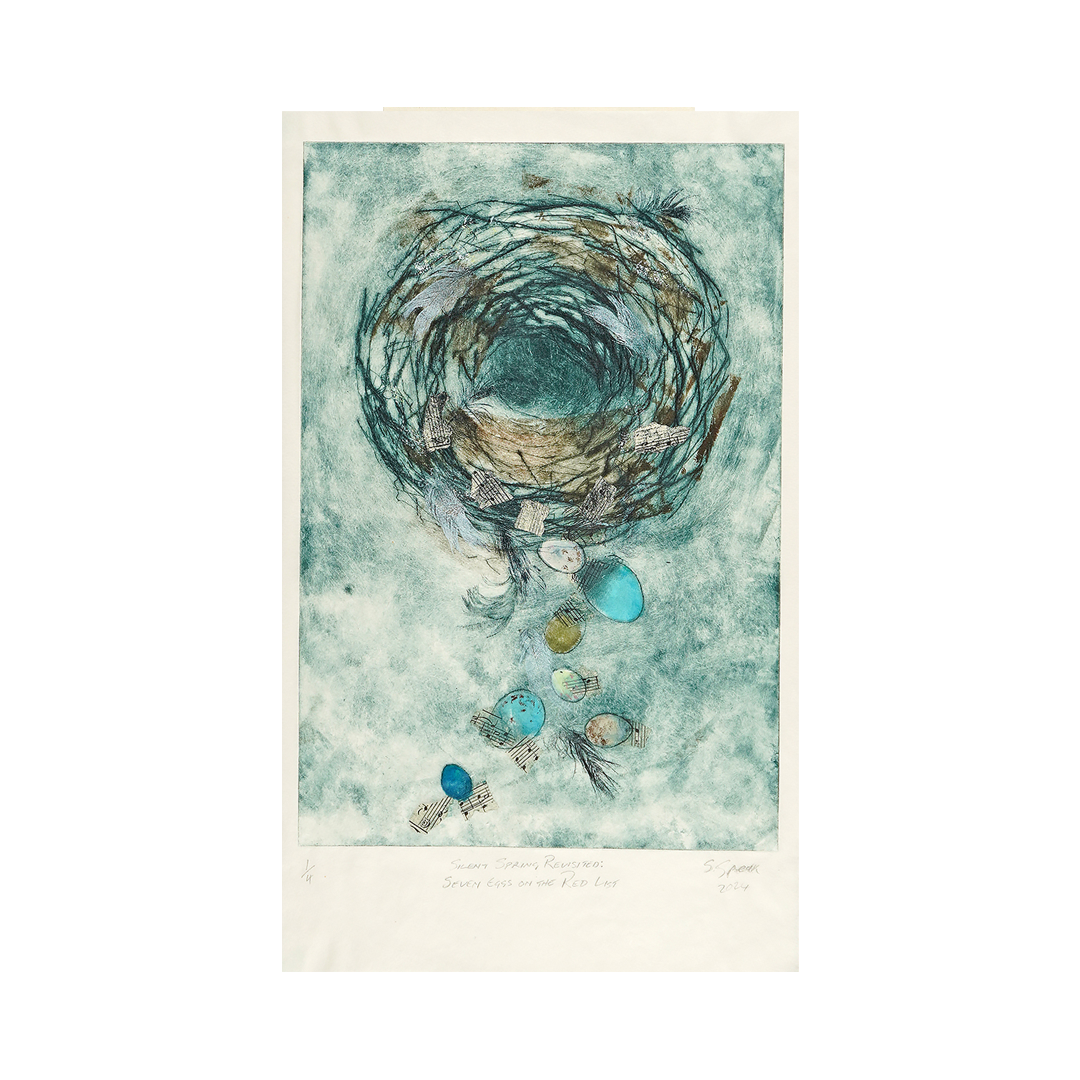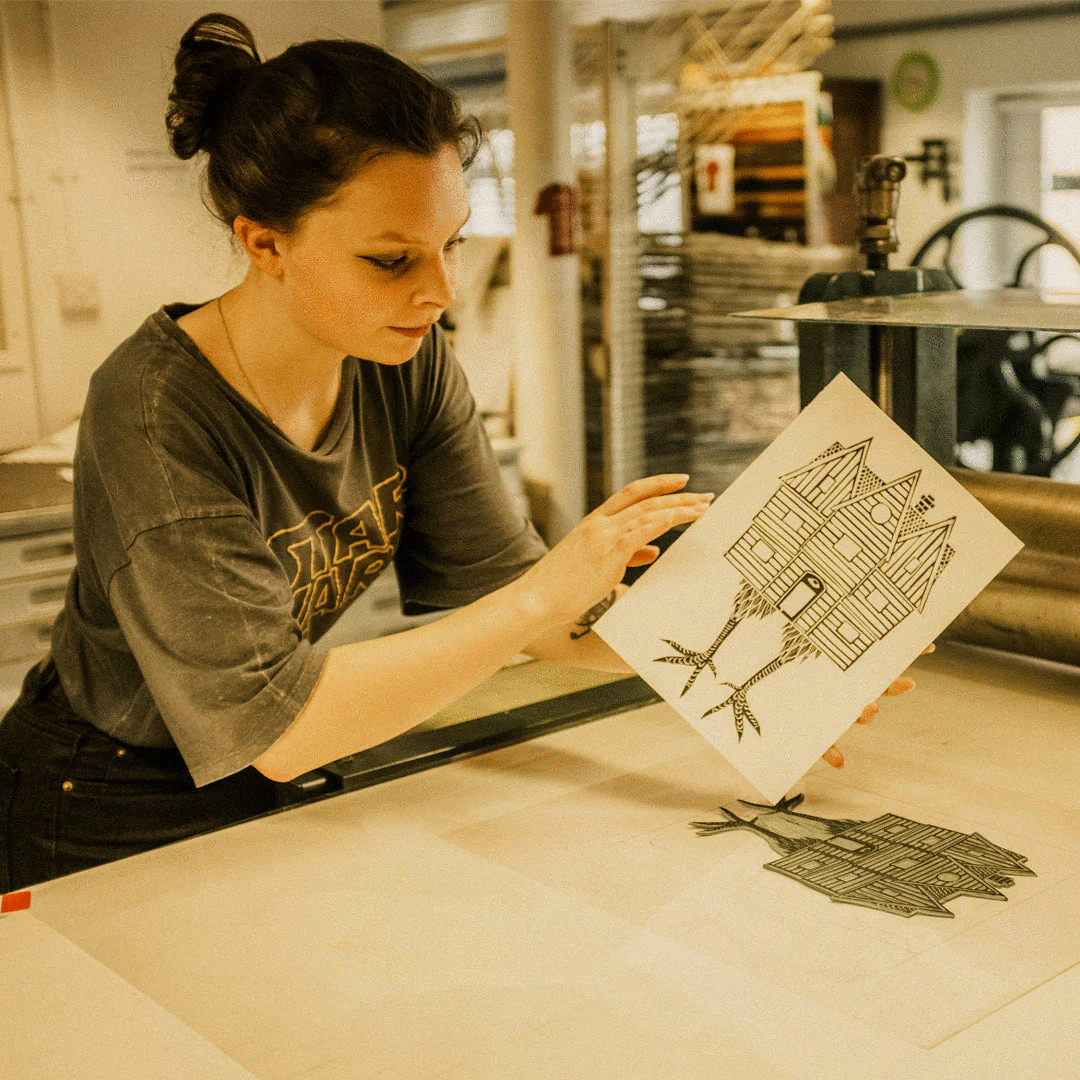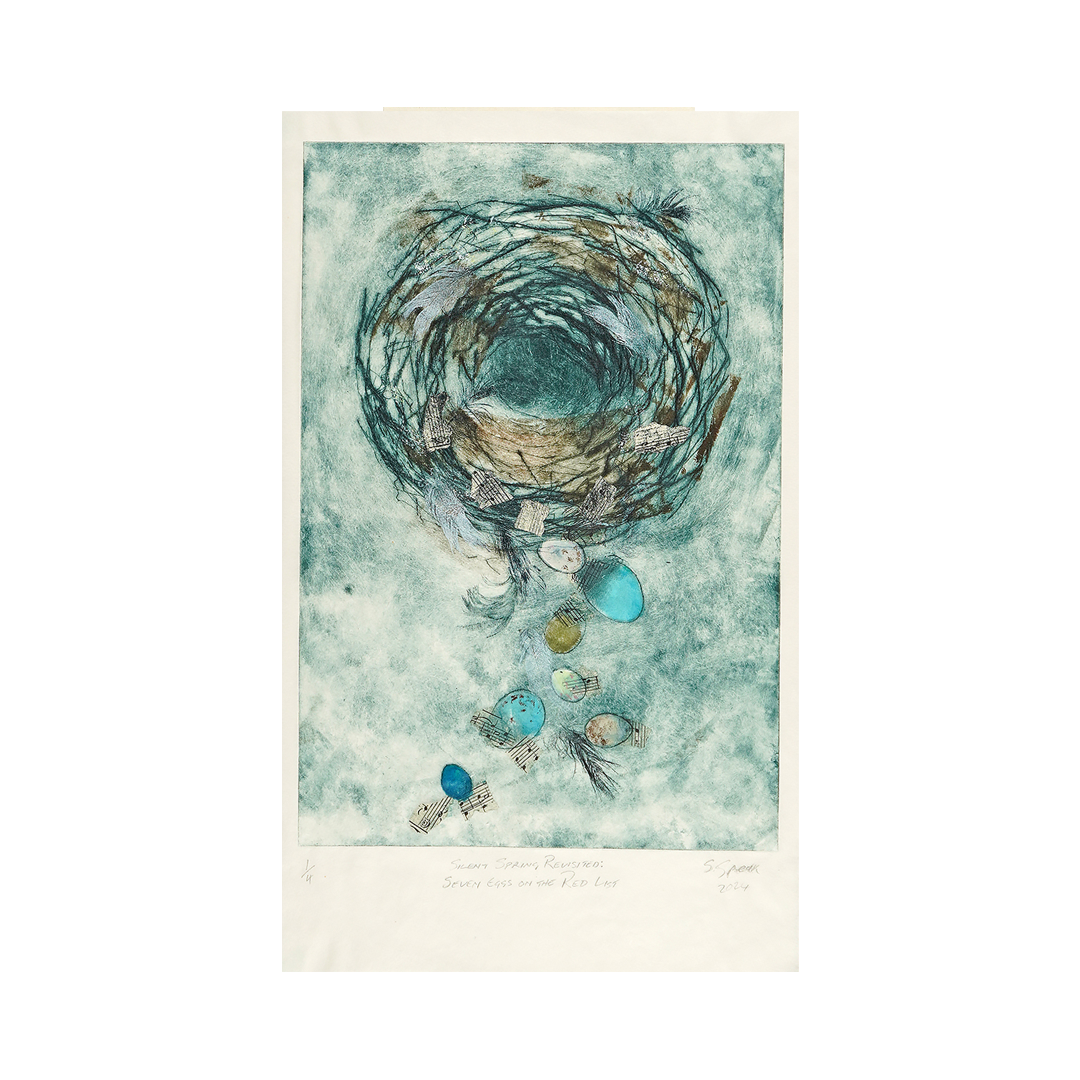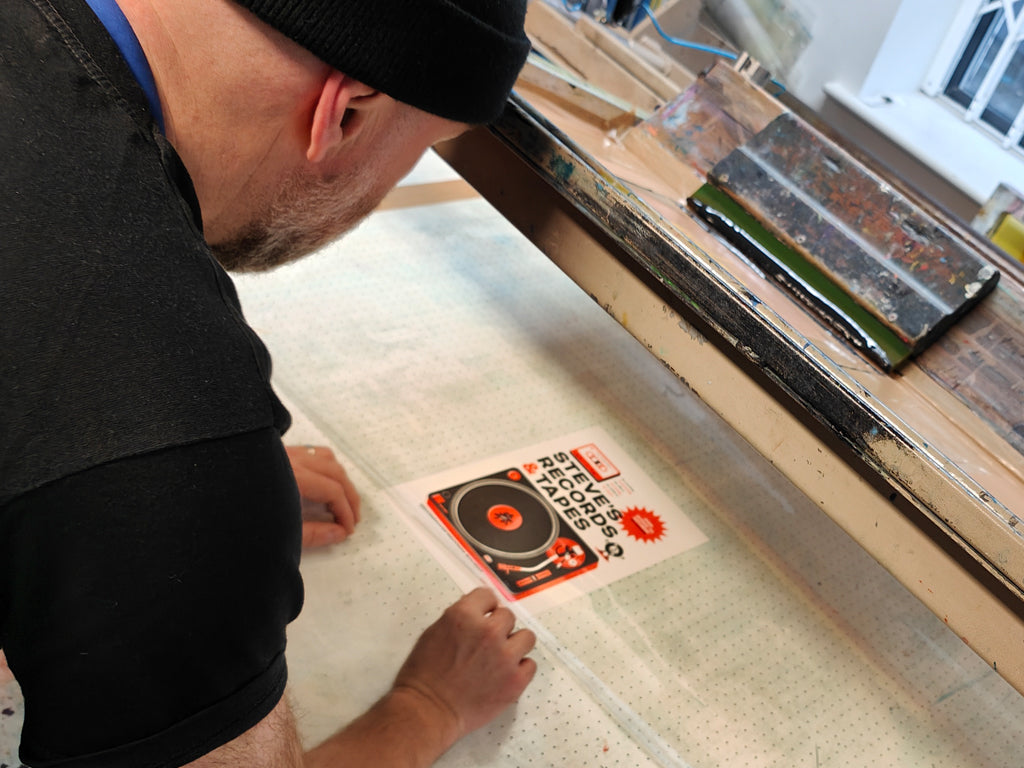Silent Spring Revisited - Seven Eggs on the Red List
Silent Spring Revisited - Seven Eggs on the Red List
Artist: Suzanne Speak
Medium: Drypoint
Dimensions: Paper Size 25 x 38cm / Image Size 21 x 30cm
Edition: 4
Postage & Packing
Postage & Packing
£9 UK postage & packing in secure postal tube.
By selecting this option, you confirm that you want to apply Gift Aid.
Couldn't load pickup availability
Share

Information
-
About this print
The print presents the eggs of seven birds on the 5th Birds of Conservation Concern Red List (2021). The eggs, loosely represented in this work at approximate size, are falling from a cold, empty nest. Small snippets of tattered music, representing birdsong, can also be seen tumbling downwards, rather than lyrically upwards as birdsong is more often shown.
I have chosen to present eggs, rather than the birds themselves, because eggs, as the unborn offspring of birds, represent the future of their species. However, increasingly intensified agriculture, greater use of pesticides, habitat loss, climate change and pollution are leading to the reduction in bird numbers. An increase in unfertilized eggs, fewer hatching and fewer young birds successfully fledging all add to the struggles some of our most iconic birds are facing. Moreover, many bird species have suffered for decades, from to the collection of their eggs in spite of legislation making such collection of eggs illegal.
Red listed birds in the pint are: Greenfinch; Starling; Whinchat; Nightingale; Mistle Thrush; Lesser Redpoll; Wood Warbler.
The work is based on a dry point plate, hand coloured both with a roller, for the background, and ‘à la poupée’ for the eggs, then printed on Kozo paper. I would normally print on Fabiano paper but chose Kozo for its delicacy, in keeping with the fragility of the eggs. The paper is much stronger than it looks!
Inspiration and research
The inspiration for this print was the work of US scientist and environmentalist, Rachel Cason. Carson’s 1962 work, ‘Silent Spring’, from which I have shamelessly borrowed for my title, documented the danger to the environment and wildlife, from the use of pesticides and other chemicals in the US. Her work was driven towards the environment by a letter from a friend who was concerned by the number of dead birds around her property.
As a ‘city girl’ I am ashamed to confess that I had very scant knowledge of British birds. Research led me to the ‘Birds of Conservation Concern 5’ (BOCC5) Red List.
To be placed on the Red List, a bird must satisfy one of the following criteria:
- Globally threatened.
- Historical population decline in the UK between 1800 and 1995.
- At least a 50% decline in the UK breeding population over the last 25 years.
- At least 50% contraction of UK breeding range over the last 25 years.
(see https://www.bto.org/sites/default/files/publications/bocc-5-a5-4pp-single-pages.pdf for details of decline)
As a result of the project I am now quite horrified at the rate of bird population decline over the last 25 to 50 years. I am also astonished that, given their small size and fragility, any of our songbirds manage to hatch and grow to adults. -
Endless Forms, Most Beautiful
Read MoreA new bestiary and herbarium for at risk species by artists from Northern Print.
“Endless Forms Most Beautiful” is made possible with The National Lottery Heritage Fund. Thanks to National Lottery players, we have been able to support visits, new printmaking and school’s programme for this project.
Northern Print artists bring together traditional printmaking and the natural world with a series of new prints highlighting the diversity of species that are categorised as ‘at risk’.
The ‘endless forms’ include marine life; plants; birds; insects and mammals with many familiar and much-loved species as well as less known and intriguing creatures that have captured the imagination and hearts of Northern Print’s artists.
This exhibition of 45 new prints has been made following a series of visits to our region’s natural history collections and habitats and represents the tiniest tip of the iceberg of our natural world under threat.
The artwork includes a range of approaches and printmaking processes – including heritage craft skills also deemed at risk including letterpress and mould-made papers



